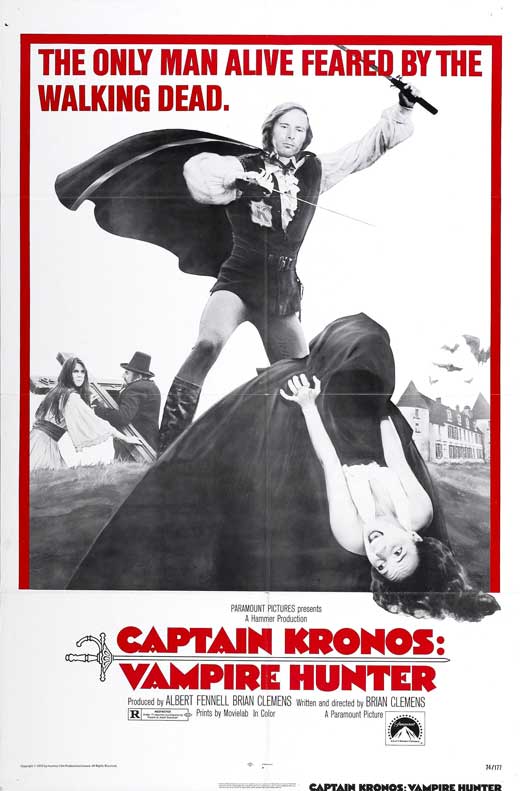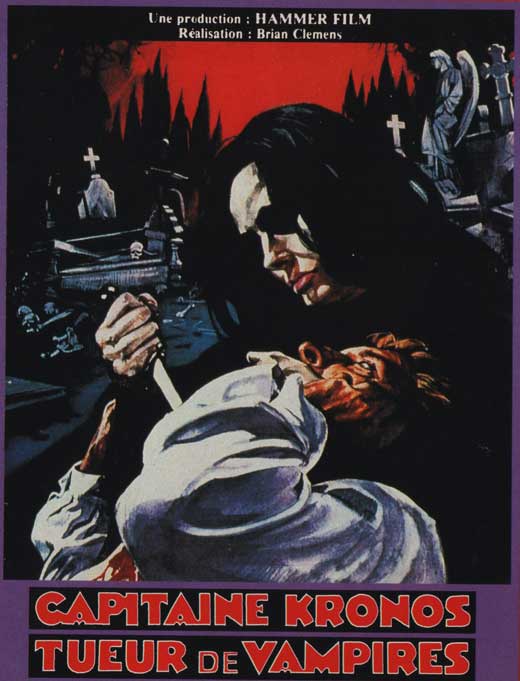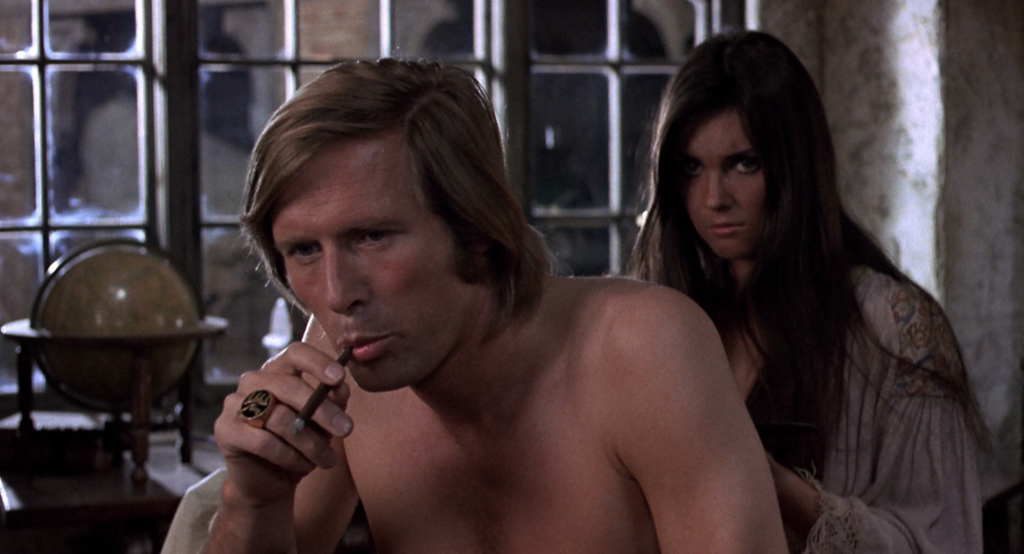
One of the last gasps of Hammer horror, and possibly the finest of that home stretch of films, Captain Kronos: Vampire Hunter (1974) was only released two years after it was completed, and then with such limited British distribution that few there saw it. These were the dark days of the British film industry, and Hammer struggled to find financing and distribution deals, once in a steady stream of brokered deals from overseas; Kronos had a shoestring budget. It’s tempting to imagine what would have happened if the film had been made a decade earlier…would we have gotten sequels? Because that’s really what the film calls for. Brian Clemens, writer of TV’s The Avengers and Hammer’s black comedy Dr. Jekyll and Sister Hyde (1971), conceived Kronos as an ongoing adventure, one that might see its title character encountering different monsters throughout history (thus his name – a nod toward a time travel angle that never saw fruition, nor is referenced in the completed film). Although Kronos would be resurrected in comic book form, first in The House of Hammer magazine and more recently in a limited series, we are left with a film which is no origin story, but an encounter with a mysterious character who rides into and out of the mists, slaying a few vampires along the way. Here, near the end of Hammer’s history, Clemens fixes a problem inherent in their long-running Dracula films. Rather than watching the same vampire resurrected and slain in film after film, why not have a recurring hero who can move from one unique story to the next? In fairness, Hammer had attempted this with The Brides of Dracula in 1960, which featured Peter Cushing’s Van Helsing as the only returning character; but it is still a Gothic vampire film built from the Bram Stoker model. You can’t say the same for Captain Kronos, for which Clemens is quick to throw the vampire playbook on the bonfire. This film, at last, gives us something refreshingly different.
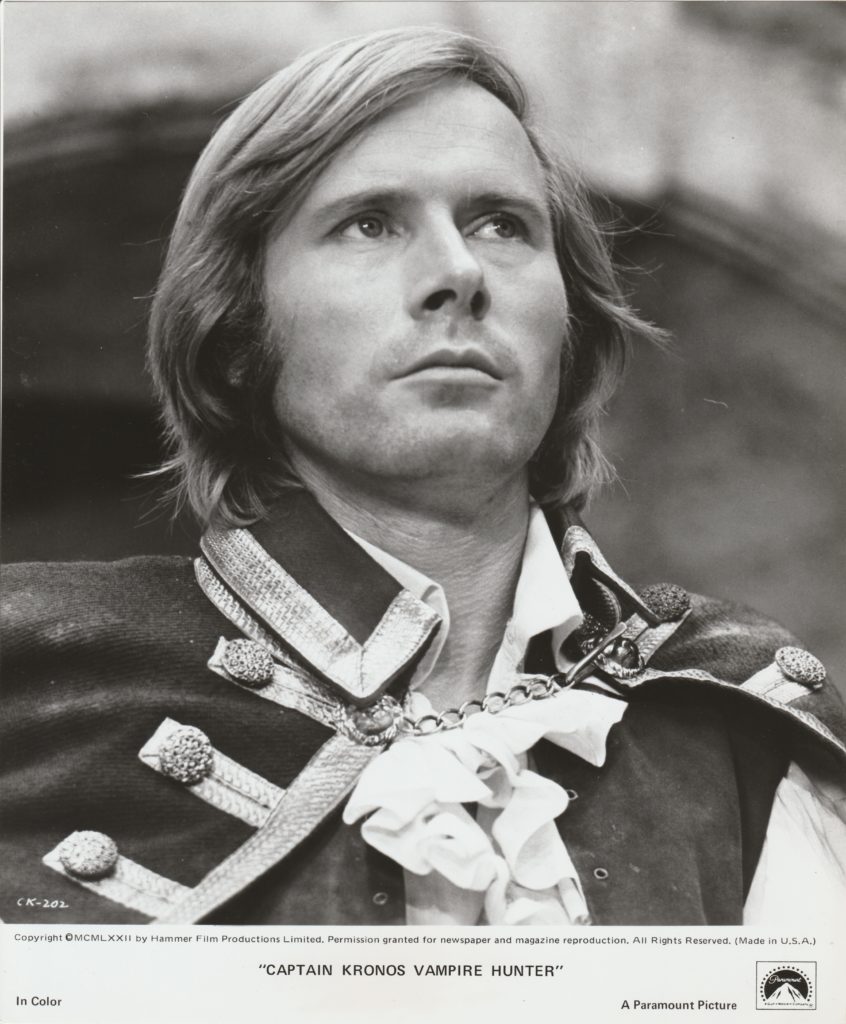
Horst Janson in a publicity still for Captain Kronos.
In a clever touch, we’re introduced to ex-soldier Kronos (German actor Horst Janson) and his intellectual hunchbacked companion, Professor Grost (John Cater, The Abominable Dr. Phibes), through the eyes of someone meeting them for the first time: Carla (Caroline Munro, Dracula A.D. 1972), being punished with the pillory for the crime of dancing on a Sunday. Essentially a hippie drifter, she forms a free-love bond with the pot-smoking Kronos when she joins the pair’s caravan. Only gradually does she discover their profession: they’re vampire killers of a more competent variety than seen in a certain Polanski movie. Summoned to a village by Kronos’s old war buddy Dr. Marcus (John Carson, Taste the Blood of Dracula), they investigate a string of murders in which the corpses have been prematurely aged. Grost quickly pegs the killer as a vampire, explaining to the skeptical Marcus that there are many different types of vampires, and some drink youth as others drink blood. Additional imaginative twists are woven into the story: Grost and Carla bury dead frogs in little boxes along a forest path, proving out a folk legend that one will come to life when the undead cross its path; we learn, in a comically grueling sequence, that not every variety of vampire can be killed in the same way; and, with a light “whodunit” touch, not every suspect is as guilty as they seem. A passing reference to a rich family’s “Karstein” blood hints at a shared universe with Hammer’s Karnstein trilogy (The Vampire Lovers/Lust for a Vampire/Twins of Evil), thus teasing the idea that Kronos could encounter other Hammer characters. But the most important twist on formula is the smooth incorporation of other genres. A tavern scene has more in common with Sergio Leone than those Michael Ripper drop-ins typical of Hammer horror, and the finale evokes Errol Flynn as Kronos uses a sword forged as a steel cross against his vampire enemy.
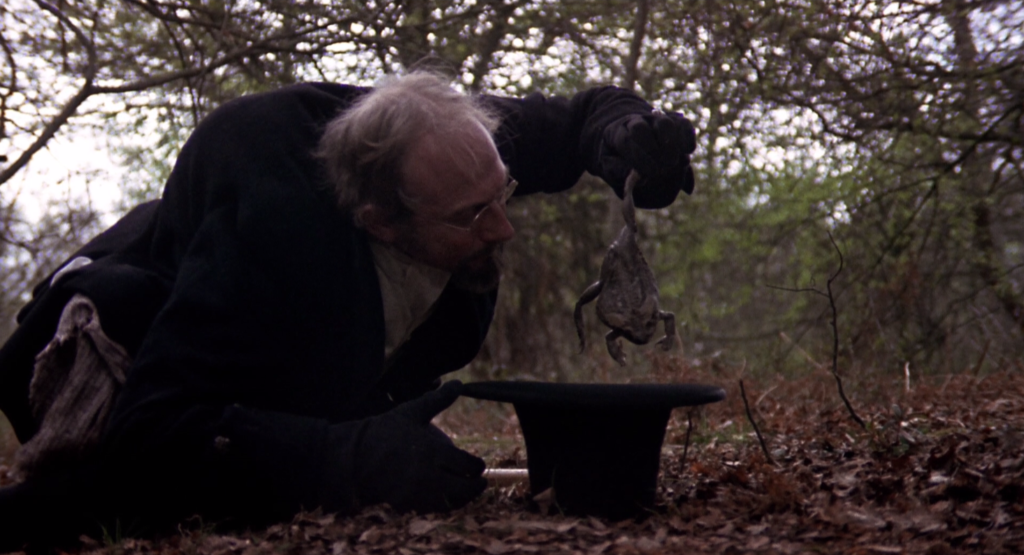
Professor Grost (John Cater) buries dead frogs to find evidence of vampire activity.
Laurie Johnson (First Men in the Moon) provides a “heroic” score more indicative of a swashbuckler, though it must be said that only the final swordfight really delivers in this regard; fight choreography is lacking elsewhere, as Clemens uses tight close-ups and shots of swinging swords to imply the fighting that we’re not quite seeing. It’s the story that holds up best, tracking in parallel the investigation of Kronos & Co. and the village’s relationship with its monied Durward family: its mysterious, aloof twins (Shane Briant and Lois Daine) – with the slightest suggestion of incest – and their often-unseen mother, suffering from a disfiguring disease that might be called Mater Suspiriorum-itis. Though cult icon Munro gets a nude scene, it’s in demure shadows; despite the passing reference, this is not in spirit a Karnstein film, and exploitation elements are minimal. (I’m not sure how this is R-rated, but for some reason it is.) Still, Captain Kronos pointed a way forward for the studio that would be frustratingly abandoned. The Captain just rode in too late. Shout Factory’s new Blu-ray offers a pleasing transfer of the film, despite the cheaper 70’s film stock and the film’s intentionally overcast tones; it was never a bright and colorful film. Accompanying the film are a new commentary track by Bruce G. Hallenbeck along with the older one by Jonathan Sothcott, Munro, and the late Clemens; and a discussion on Hammer in the 70’s with Kim Newman and Stephen Jones in which the astute observation is made that Captain Kronos plays a bit like Hammer horror fan fiction (which isn’t a bad thing).
